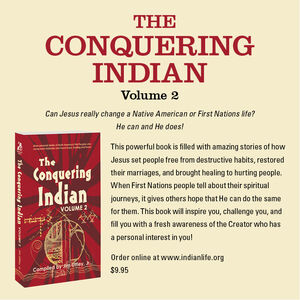Tribes participate in NASA program for students
Last updated 9/2/2021 at 4:54pm
WASHINGTON, D.C.-Middle school students from three tribes in Oklahoma have been chosen to work with the National Aeronautics and Space Administration (NASA) on a program called the "Native Earth/Native Sky"(NENS) program.
The objective is to build culturally-relevant earth-sky STEM programming for middle schoolers in three Oklahoma Native American nations that will increase the students' understanding of and interest in earth and space science, technology, engineering and math (STEM). By interweaving Native stories and language with STEM principles the developers hope to help students' understanding of earth-sky STEM topics and allow the students to better identify with the concepts.
The Cherokee, Choctaw, and Chickasaw Nations of Oklahoma will work with NASA and Oklahoma State University during the program's tenure, which will be sponsored with funding from NASA's Science Activation program.
While many such curricula exist, Dr. Kat Gardner-Vandy, principal investigator of the program and assistant professor of aviation and space in the School of Educational Foundations, Leadership and Aviation, believes this is one of the first formal earth-sky curriculum to highlight Oklahoma's diversity of Native American culture that will result in curriculum that meets Oklahoma state standards.
"Our goal is to work with individual nations and collaborate with them," said Gardner-Vandy, who is a member of the Choctaw Nation of Oklahoma. "In Native American culture, it's important to include elders, the community as a whole, culture and language into education efforts."
The program will have multiple objectives. The first objective will involve interviewing elders and educators to identify earth-sky legends and earth-sky words in each nation's language. Objective 2 will involve creating tribe-specific STEM curriculum for middle-schools, which combines the tribal legends and STEM principals. The curricula will also include videos from NASA scientists, engineers and community subject matter experts. Objective 3 will include testing the effectiveness of each curriculum in a summer camp and school setting within each nation. Objective 4 will include providing professional development opportunities to teachers local to the nations and region. Objective 5 will include evaluating the program through results of student assessments and tribal feedback to hone each curriculum. Once approved by the nations, NASA will publish an Open Educational Resource.
"In a traditional curriculum, there is often a very Westernized way of looking at science," Gardner-Vandy said. "It might include the scientific method and an experiment, but it won't incorporate storytelling and language. Our Native Earth | Native Sky curriculum will incorporate all of these things. It will look more like STEM, language arts and social studies together."
The program will work towards fulfilling NASA's 2018 Strategic Plan to serve the American public and support national priorities by serving underrepresented populations like Native Americans. Leaders feel the successful completion of this project will not only have a positive outcome for STEM education in these three Native American nations, but it will also lead to an increased participation of Native Americans in the national STEM workforce. This program will allow STEM teachers to bring Native American cultural perspectives into the classroom, which is relevant for teachers throughout Oklahoma, where there is a high portion of Native American students across school districts, and also teachers throughout the United States.
"One of the main reasons Native Americans are so underrepresented in science and engineering fields has a lot to do with culture and community," Gardner-Vandy said. "By adding that Native American culture and language into our curriculum, we're including Native American communities in the conversation."








